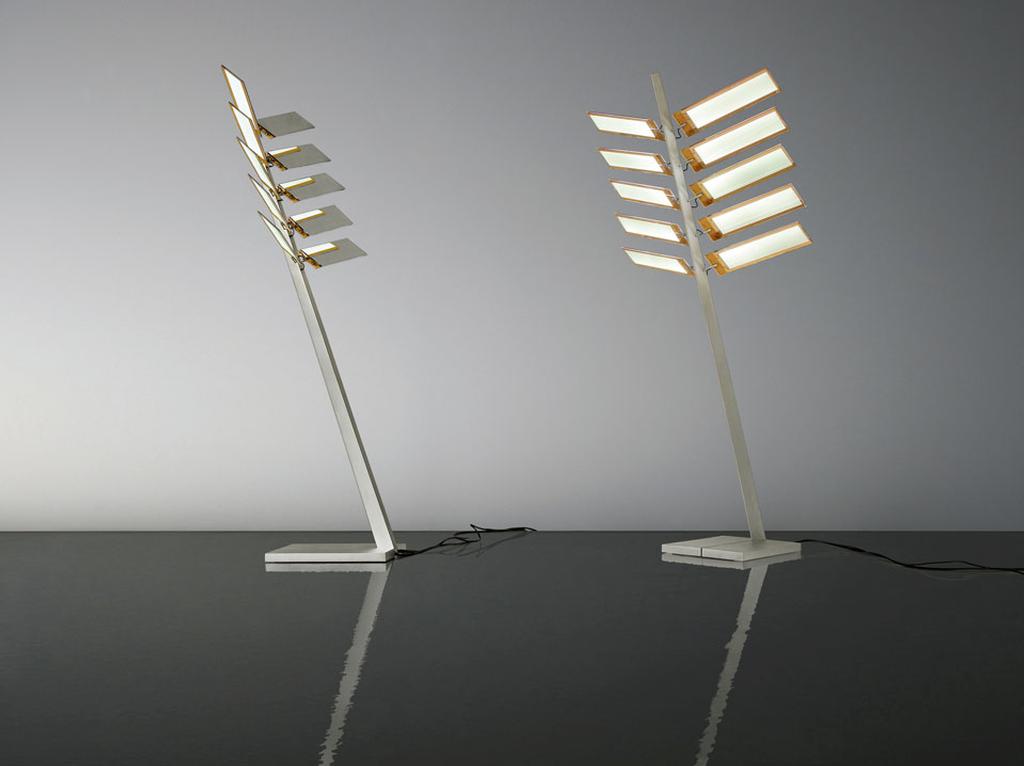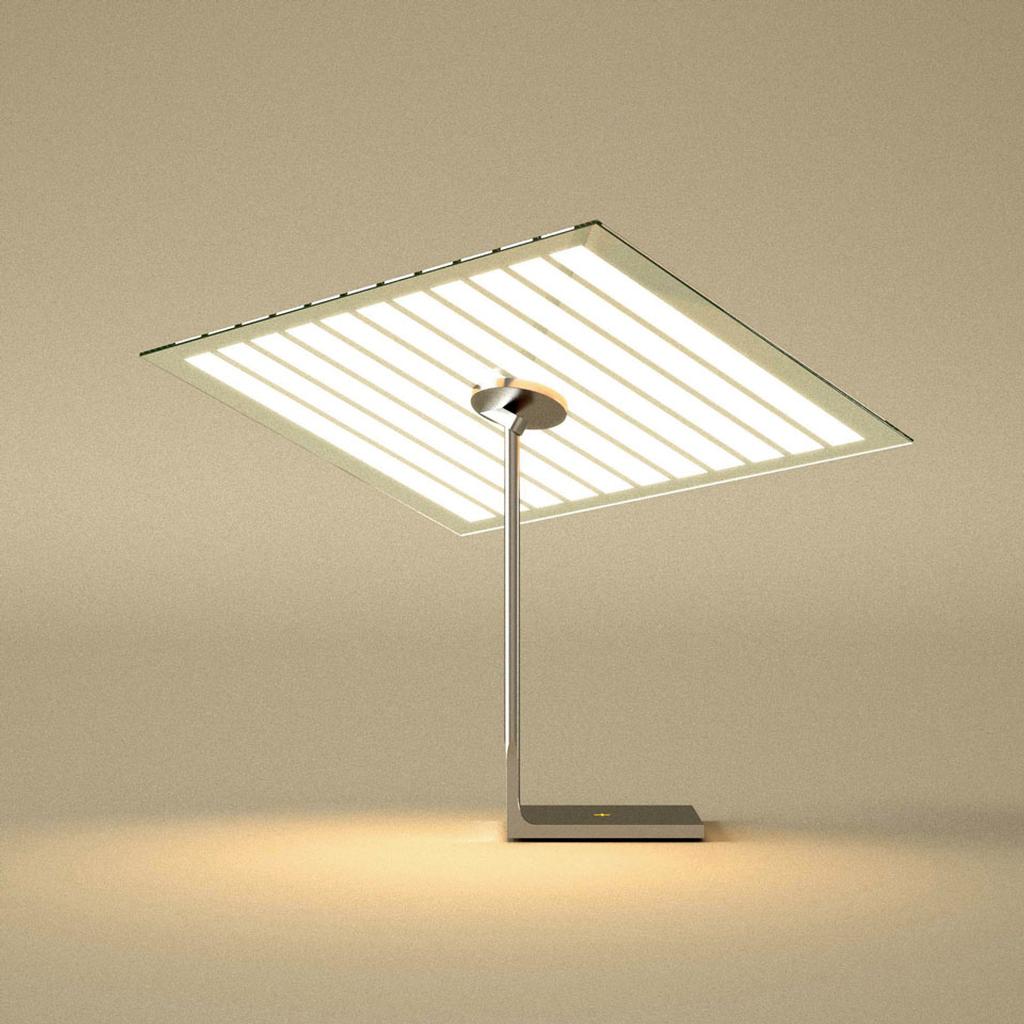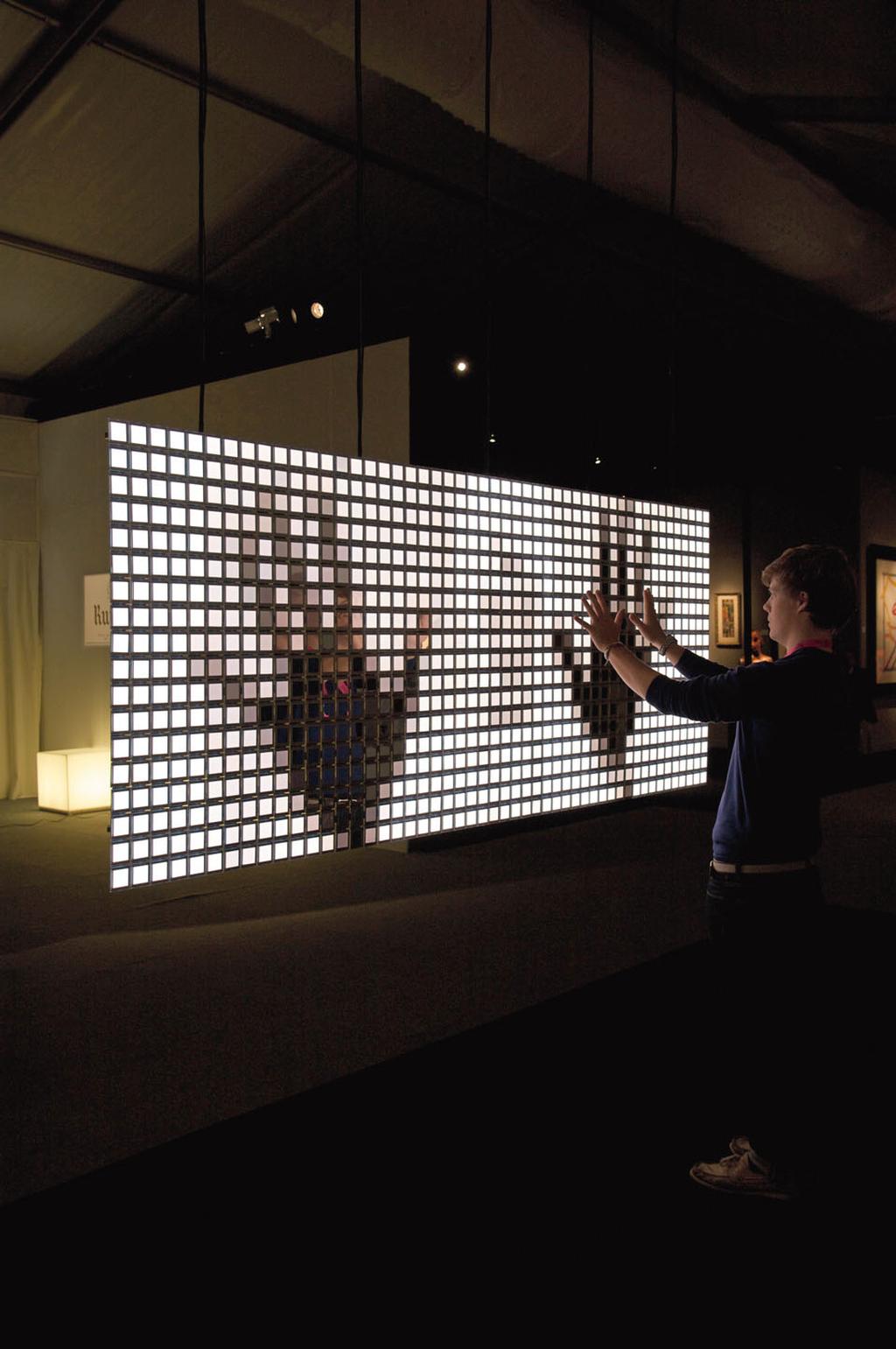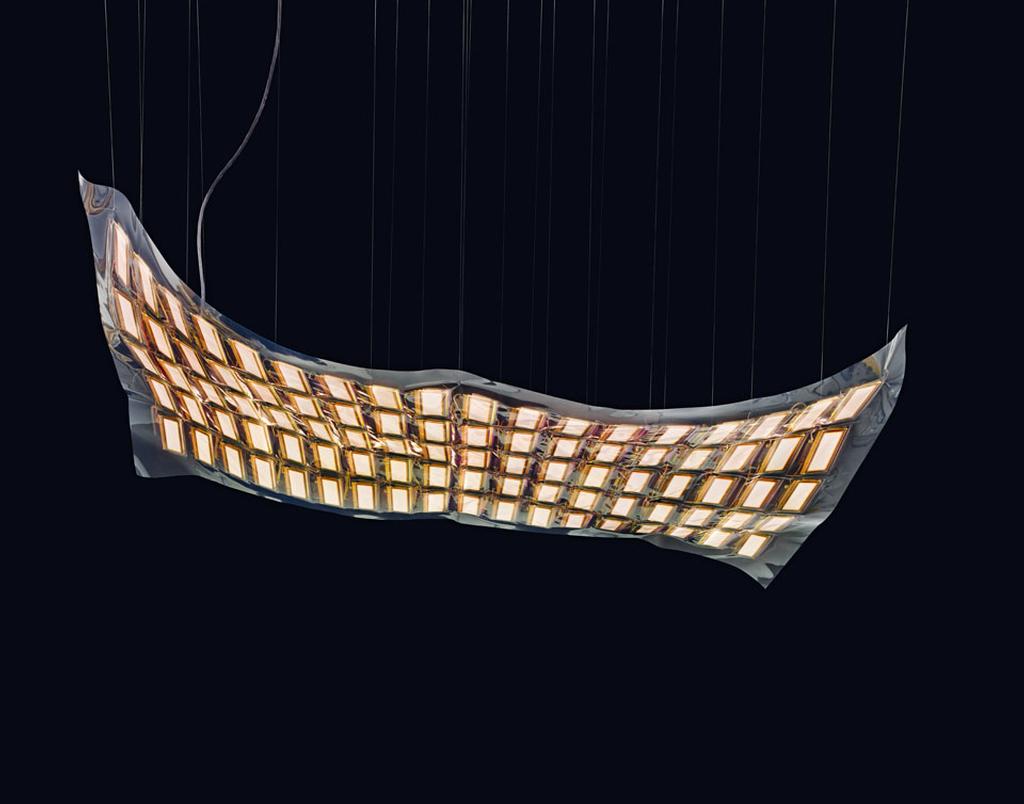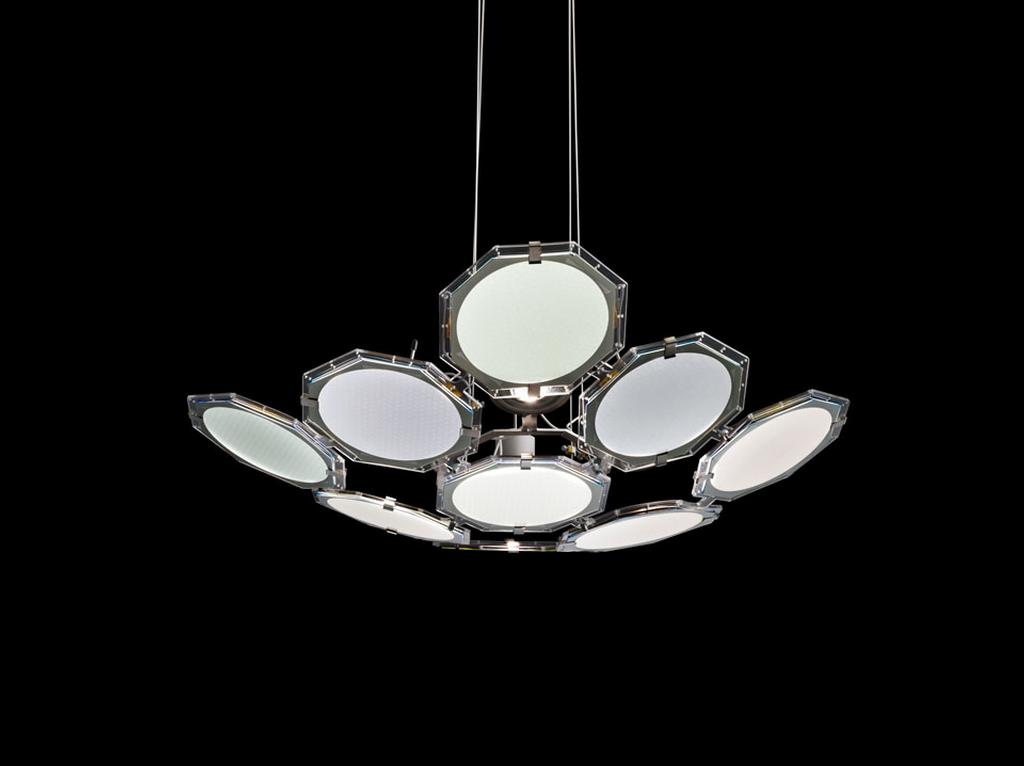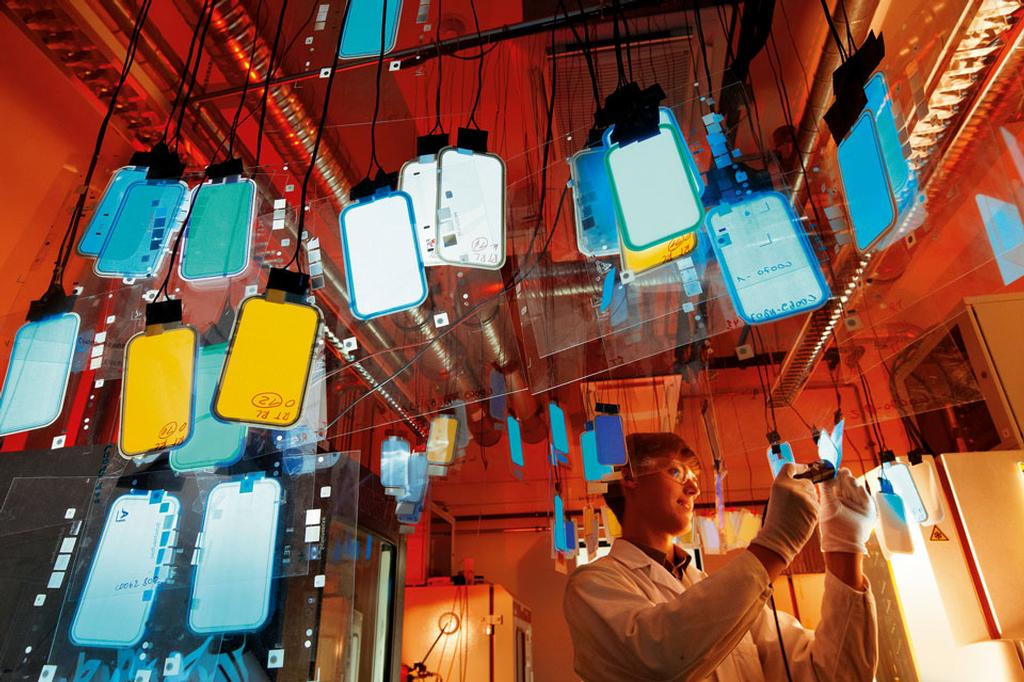OLED, technology and applications
OLEDs are a new class of light sources that open up completely new scenarios in lighting. Like LED technology, OLEDs are solid-state devices, but the nature of their surfaces opens up a world of luminescent skins – luminous surfaces that can transform the perception of light itself. Like their LED "cousins", OLEDs are light-emitting diodes. However, they exploit the qualities of "organic" electronics: thin plastic films having the thickness of a sheet of paper that can emit light in response to an electric current. OLED technology offers significant advantages (low voltage, high contrast, bright colours) with some limitations. First of all, the cost is still very high. LEDs and OLEDs both use some semiconductor materials, suitably "doped" to produce photons when a difference in electric potential is applied. Today, these materials are the new technological frontier in the development of a multitude of innovative products, such as OLEDs of course, but also for organic solar cells and other applications including memories, organic sensors, flexible batteries, electronic paper and many more. We are therefore transitioning from laboratory testing and prototype development to industrial production. Market forecasts published by OLED manufacturers indicate that the first generation of serial products will be on the market by 2012, while from 2012 to 2018, we will see the advent of true standardised industrial production.
What are OLEDs?
OLEDs – organic light-emitting diodes – are made up of stacked layers of organic material (100 nanometres each) placed between an anode and a cathode. The substrate, at present, is a thin sheet of glass with a transparent conductive layer – the anode – which is overlapped by the organic layers of holes and electrons. This, in turn, is followed by an inorganic cathode. Experiments, however, are showing that the use of a thin, flexible film is opening entirely new horizons. In the architecture of this new generation of products, the heirs to "organic" electronics, there is a striking similarity between products that are "traditionally" of different typologies but which, with new production processes similar to printing, are developing new formal and functional affinities. This "symmetry" regards solar cells, for example. Their architecture is similar to that of the OLEDs, with the difference that the organic material that emits electrons and holes is replaced by a material which absorbs the photons of sunlight. In a certain sense, the two systems are mirror images: one material stimulated by an electric current emits light; while the other, hit by light, emits electrical current. It is therefore easy to imagine that in the future such a familiar element as a window might be able to store energy during the day and then return it in the form of light. In other words, it could function as a solar cell or luminous surface as necessary. When switched off, the OLED can be transparent so that a whole generation of new products can be imagined. Potential applications range from small decorative lamps and signs to lighting integrated with architecture such as luminous ceilings or flexible luminous furnishings that can be folded or rolled up, thus creating numerous uses for illuminating buildings, aircraft or car interiors (ceilings of passenger compartments, for example) with considerable advantages in terms of lightness and reduced energy consumption. The emitted light is also particularly suited to heat-sensitive applications such as refrigeration or display stands for food, since the emitted light has rather low power per unit area, does not produce glare or generate large amounts of heat.
Organic Electronics versus Silicon
In OLED technology, light emission occurs when voltage is applied to organic materials. In this case, organic is intended as a plastic material based on the carbon chain. Organic semiconductors are composed both of "small molecules" with low molecular weight as well as of long polymer chains. Small molecules are deposited by thermal evaporation under vacuum, while layers of long-chain polymers use the ink-jet printing system. This production process is cheaper than traditional silicon manufacturing techniques, which result in high melting temperatures and require numerous steps (from ingot to wafer). Organic electronics moves towards light manufacturing and cost reduction. Compared with silicon technologies requiring great investments and heavy infrastructure, organic electronics opens up scenarios calling for light equipment and technologies similar to those used in newspaper printing (such as roll-to-roll fabrication).
Sustainability
Since 19 per cent of global energy consumption is used for the production of light, the possibility for significant savings frames the issue of OLEDs in terms of environmental sustainability. Efficiency of the sources – i.e. how they transform electrical energy into light energy – is an increasingly important parameter at a time when new energy regulations throughout the world are legislating the decommissioning of inefficient lighting products and, therefore, the renewal of light sources. OLEDs, like LEDs, have high efficacy rates of about 100 to 120 lumens per Watt (Lm/W) for the LEDs, and 65 Lm/W for the OLEDs (whereas an incandescent bulb consumes 15 to 20 Lm/W). Moreover, OLEDs do not contain hazardous substances like mercury, thus minimising the problem of recycling. Alberto Meda
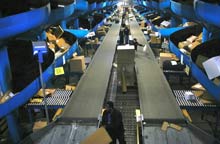 |
| Move it: At the FedEx SuperHub in Memphis, chutes and conveyor belts carry more than 1.2 million packages each night. |
The retail season is in full swing for the holidays, and it couldn't happen without two giants of logistics, UPS and FedEx. As those brown UPS trucks remind us, the global economy thrives on "synchronizing the world of commerce."
Not long ago, I talked with FedEx founder Fred Smith at a World 50 meeting of executives in Memphis, Tennessee. More recently I visited the company's operations in the midst of holiday-season madness.
Here is some of what I learned:
Make no little plans. The great architect Daniel Burnham once said, "Make no little plans. They have no magic to stir men's blood and probably will not themselves be realized."
Fred Smith's inspiration for FedEx involved no little plans. The result is the largest air-cargo company in the world: it employs 290,000 people, maintains a fleet of 75,000 trucks, and owns and operates 684 jets. It has more wide-body jets than any airline, including Boeing 777s that can fly from Shanghai to Memphis nonstop. The SuperHub, the heart of FedEx's operations, measures four by four miles and occupies 900 acres. Some 30,000 people are needed to run it.
In many ways, the SuperHub dwarfs its "big brother," Memphis International Airport. The SuperHub is a world unto itself, with a hospital, a fire station, a meteorology unit, and a private security force; it has branches of U.S. Customs and Homeland Security, plus anti-terror operations no one will talk about. It has 20 electric power generators as backup to keep it running if the power grid goes down.
Every weekday night at the SuperHub, FedEx lands, unloads (in just half an hour, even for a super-jumbo 777), reloads, and flies out 150 to 200 jets. Its aircraft take off and land every 90 seconds. This all happens between 11 p.m. and 4 a.m. Central Time. The SuperHub processes between 1.2 million and 1.6 million packages a night.
From Thanksgiving to Christmas, FedEx will ship 223 million packages worldwide. Last Monday, its busiest night ever, it moved 16 million packages.
Be a speed demon and a control freak. Walking the SuperHub, you can feel the need for speed. Planes land continually and disgorge oversized aluminum containers; parcels of all shapes and sizes zoom into processing centers on hyper-kinetic conveyor belts; and no fewer than 2,000 drivers of light trucks, forklifts, and small industrial vehicles swarm throughout the facility. To control it all, everything and everyone is UPC-tagged; everyone and everything is tracked.
Nothing illustrates the point better than the Small Package Sortation System, a vast, FedEx-designed machine that sits in its own warehouse. It cost $175 million to build and sorts an average of 1.2 million packages a night. It scans the bar code on every package at least 30 times. Any delays in the process can get detected in minutes. That's why the U.S. Postal Service has become one of FedEx's major accounts. FedEx's SmartPost operation delivers the "last mile" for much of the United States' daily mail.
Because FedEx is as disciplined and reliable as it is, standard items it ships include chemotherapy drugs, human hearts and other live human organs, artificial joints, contact lenses, surgical scalpels, fresh blood, heart monitors, circuit boards, auto bumpers, tractor parts, Swiss watch elements, rare manuscripts, aviation components, Maine lobsters, crickets, whales, snakes, Japanese cherries, Hawaiian flowers, tennis shoes, and European fragrances. Oh, and FedEx also transports the occasional Arabian race horse and antique automobile. Any large cargo, from 150 pounds to 2,000 pounds, is fair game.
It's about the information, stupid. IT both created demand for FedEx's services (Dell was one of FedEx's first tech customers) and enabled FedEx to thrive. Smith realized that tracking packages—knowing points of origin, movement through the system, and estimated times of arrival—was nearly as valuable as the packages themselves. Today's FedEx has made innovative uses of new data-tracking technologies, such as QR codes and RFID tags. The latter report on temperature and moisture conditions of individual packages as they move from origination point to destination.
If there were "Seven Wonders of the Industrial World," FedEx's SuperHub would easily rank among them, right up there with Toyota's production centers, Google's data centers, and NASA's Mission Control.
Jeffrey F. Rayport is a former faculty member at Harvard Business School and the author of several books about electronic commerce. He is the founder of Marketspace LLC, a strategic advisory company. Currently, he is an operating partner at Castanea Partners, a Boston-based private equity firm.

